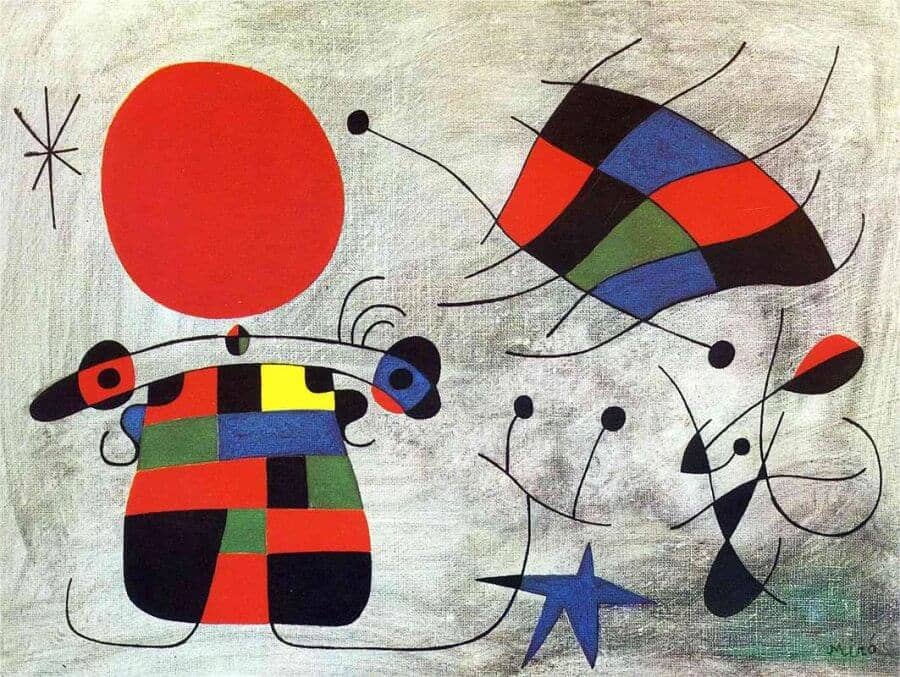The Smile of the Flamboyant Wings, 1953 by Joan Miro

The Smile of the Flamboyant Wings, 1953 is the first in a series of similarly impulsive paintings. Some even feature Miro's handprints - a pleading gesture for which he derived his inspiration from pre-historic cave
drawings. The use of materials and gestures became increasingly important factors in Miro's works. For a while he devoted himself exclusively to ceramics and developed some new techniques together with Artigas. It was with great
energy that Miro subsequently took up painting again in 1960. With his new large-format paintings he picked up the thread of his series of pictures of 1953/54, while at the same time developing them further in the direction of
poetic sensitivity.
Is not a similar striving after abstraction, after the dissolution of matter and the rational organization of the composition, manifest in the early works of Paul Klee and
Wassily Kandinsky? In Kandinsky's case, it sprang from the desire to realize the absolute expressive potential of colours and their interrelationships; in Klee's, the aim was to
uncover the mystery of a phenomenon or a form. Miro followed a third route. He was concerned to force the "effective reality of his surroundings to reveal itself even more vividly in a picture. He liked to feel he was on the
way towards a new kind of pictorial reality - Cubism encouraged him, but his most profound purpose lay beyond them; he was more attracted by synthesis than by analysis.
















